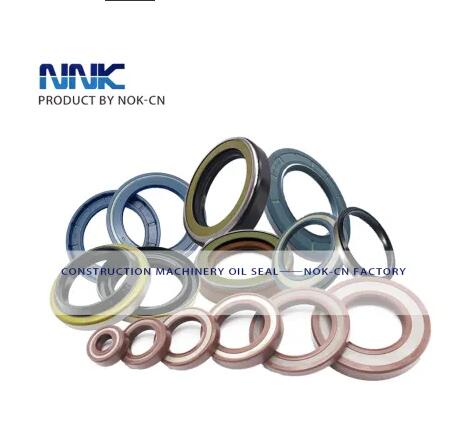Basic knowledge of PTFE oil seals
May. 09, 2025
At present, nitrile rubber and fluorine rubber materials are widely used, the former is low cost, but the temperature resistance and sealing performance are poor, and the leakage is more serious; The temperature resistance and sealing of the latter have been significantly improved, but the cost is higher, and it still has some undesirable commonalities of ordinary rubber materials: such as poor wear resistance, short service life, and special sensitivity to the eccentric reaction of the shaft, etc., and the leakage phenomenon is still relatively common.
Filled polytetrafluoroethylene (PTFE) oil seal instead of lip-shaped rubber oil seal, successfully solved the problem of water leakage and oil leakage of rubber skeleton oil seal.
1. Advantages of PTFE oil seal material
Polytetrafluoroethylene (PTFE), also known as Teflon or King of Plastics, is a copolymer of tetrafluoroethylene monomer, which has the following advantages:
(1) Chemical stability: almost all chemical resistance, strong acids, strong alkalis or strong oxidants and organic solvents have no effect on it.
(2) Thermal stability: the pyrolysis temperature is above 400°C. Therefore, PTFE can work normally in the temperature range of -200°C~300°C.
(3) Friction reduction: The friction coefficient of PTFE material is very low, only 0.02, which is 1/40 of rubber.
(4) Self-lubrication: The surface of PTFE material has outstanding self-lubrication, and almost all viscous substances cannot adhere to its surface.
2. PTFE oil seal filling modification
Pure PTFE is not wear-resistant, and in order to make it practical, it must be filled with modification treatment. We use two methods: one is inorganic filling modification, adding glass fiber, carbon fiber, graphite, molybdenum disulfide, etc. to PTFE. The other is organic filling modification, adding polystyrene resin, polyphenylene sulfide, etc. to PTFE (suitable for water purification, food, and pharmaceutical sealing). Through filling modification, the wear resistance of PTFE is increased by 2000 times, and the rigidity and thermal conductivity are increased, so that the oil seal can meet the high life requirements.

3. PTFE sealing principle
PTFE oil seal lip is drawn into a flare shape during processing, because PTFE has the ability to shrink memory after drawing, the friction heat generated in the work makes the lip continue to shrink, so it does not need the help of the spring, it will be tightly hugged on the shaft, so that it does not have a gap with the shaft surface, and can compensate for the wear.
Fourth, the advantages of PTFE oil seal
Polytetrafluoroethylene (PTFE) oil seals have the following advantages compared with rubber oil seals:
1. The rubber oil seal adopts a spring-pressed sharp lip, and the contact surface width with the shaft is only 0.3-0.5mm, and the PTFE oil seal adopts a spring-free wide-lip power structure, and the width of the contact surface with the shaft is 5-7mm, so that a sufficient oil film can be maintained, and it is not sensitive to the eccentricity of the shaft, and it can still work normally under the condition of radial runout of 0.4mm.
2. The inner wall of the PTFE oil seal is engraved with a threaded groove opposite to the shaft rotation, and when the shaft rotates, an inward thrust will be generated to prevent the fluid from flowing out. This thrust is so high that it can seal the pressure of 1.0 MPa (single lip) and 3 MPa (double lip) fluids, and the rubber oil seal is only 0.03 MPa
3. PTFE oil seal has excellent anti-friction properties, especially suitable for working in oil-free or oil-less state, and can immediately have low friction characteristics even if it is re-activated after long-term shutdown.
4. PTFE oil seals are especially suitable for high-speed rotation applications, with speeds up to 30m/s.
5. PTFE oil seal can be leak-free.
5. Application of PTFE oil seal
PTFE oil seals are mainly used in air compressors, engines, gearboxes, motors, pumps, air conditioners, mixers, automated precision machinery, robots, chemical processing equipment, pharmaceutical and food processing equipment, etc., especially suitable for applications that cannot be met by traditional rubber oil seals.
6. PTFE oil seal installation requirements
The design of PTFE oil seal installation and installation site can refer to NOK oil seal VAJ type or CFW-Simmerring oil seal B2PT type.
PTFE oil seal is a high-tech product.
1
0
0
All Comments (0)
Previous: None
Next: How to Choose the Best Boxing Gear for Beginners: Top Tips
If you are interested in sending in a Guest Blogger Submission,welcome to write for us!


Comments